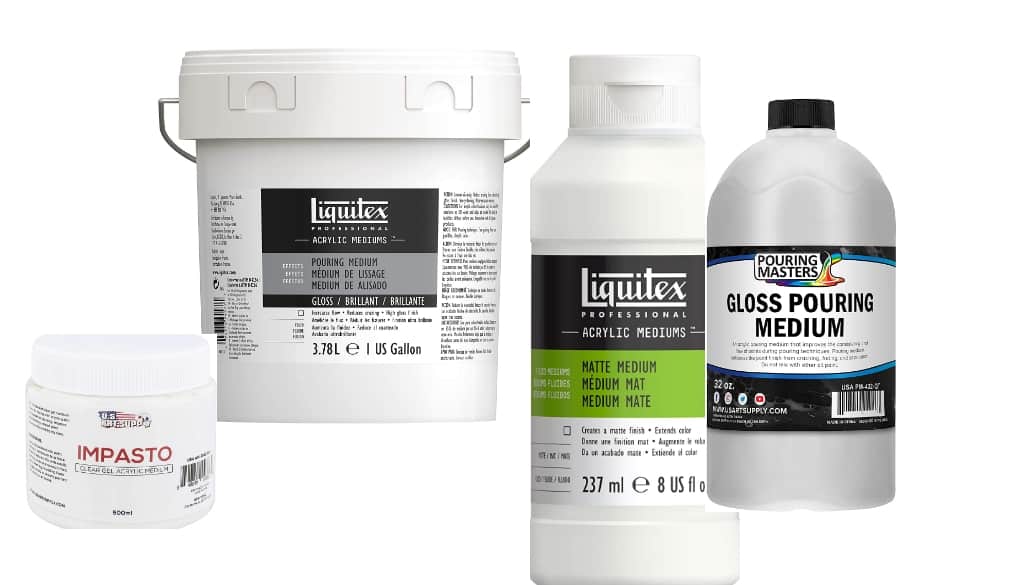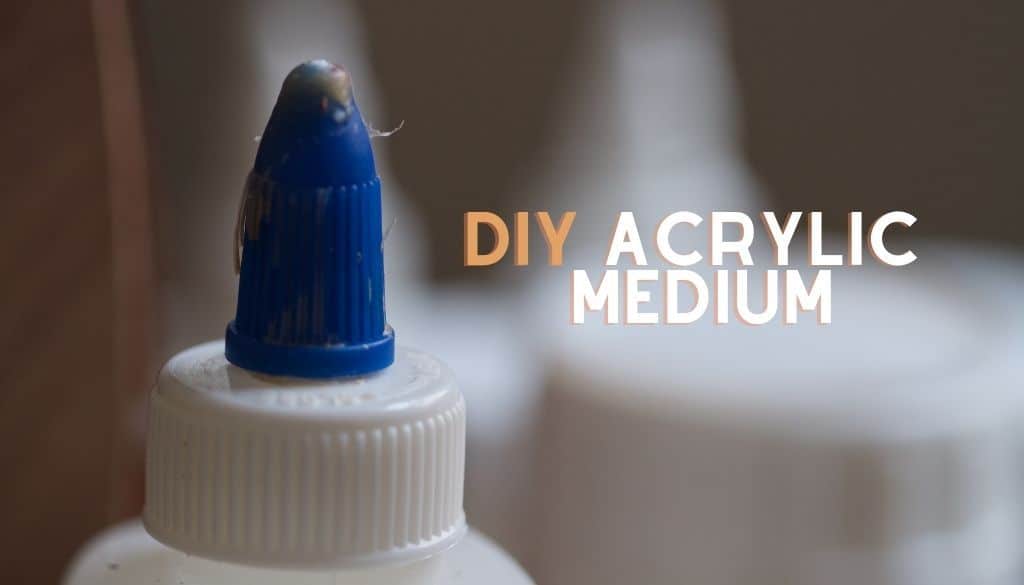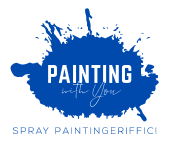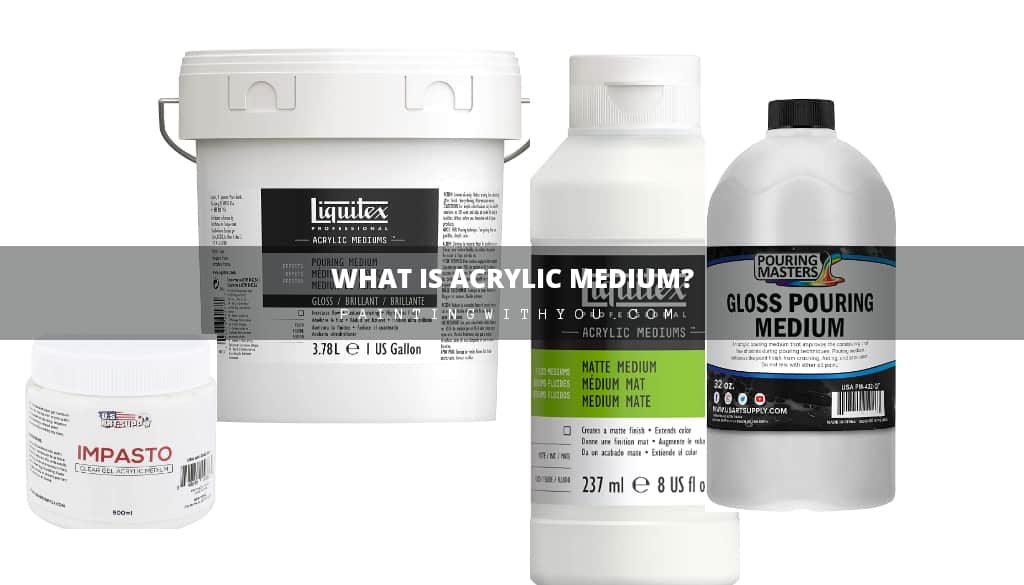I love experimenting with different art supplies. Depending on the materials you use, you can get totally different effects. Sometimes, you’ll find a product that has properties that are great for your project, but one or two traits seem to make it not work.

Acrylic medium is an additive that can alter specific characteristics of the paint to make it work for exactly what you need without loosing its pigment. With acrylic mediums you can thin your paint, make it dry slower and create different kind of textures.
Many painters love them and we are going to find out why. Also, you may find interesting my post: Acrylic pouring medium guide
What is an acrylic medium used for?
A medium can be used to add texture to paints, to thin your paint without sacrificing pigment, or to slow the drying time. They can make acrylic paintings look more like oils, either by being mixed with the paints or as a glazing medium.
Flow aid or retarding mediums can help with blending colors or decreasing brush strokes. For increased texture, you can use a gel medium, which is also useful in collage work.
Different types of Acrylic mediums available
Let’s discuss some of the most common uses and techniques.
When to use Gel Medium?
Acrylic gel medium is essentially thick acrylic paint without pigment. Impasto techniques are a good use of gel medium, which you can choose in a gloss or matte version.
In this technique, paints are laid on in thick layers, allowing the painter to create heavy brush or knife-stroke texture.
Gel mediums are also useful in collage work. It can be used for the adhesive qualities or can be built up to apply 3D items into a collage.
PRO TIP: The medium can also be used on its own. Painters sometimes build the texture of their painting on the canvas, then top that with pigmented paints.
What are Fluid Mediums?
Fluid mediums are basically the opposite of gel mediums. While gels thicken the acrylic paint, fluid mediums thin the paint, without losing pigment or watering down the binder.
Pour paintings have become very popular in the past several years. It’s good to have a quick-drying paint for this technique, but you also need something with low viscosity.
Fluid mediums are the ideal product to add to acrylic paint so it is liquid enough to flow.
[amazon box=”B002648RDU” template=”horizontal”]
When should you use Retarding Medium?
Retarding medium is best when you want acrylic paint to look more like oils during the painting process. Oil paints blend very well, mostly because they take some time to dry.
Adding this medium to your acrylic paint results in a longer drying time and smoother blending effects.
If you have a lot of blending to do, but don’t want to deal with the time that oil paint takes to dry, acrylics with slow-drying mediums are perfect.
[amazon box=”B000KNPMG4″ template=”horizontal”]
Where can Glazing Mediums help?
Another downfall to acrylic painting is the matte finish. Glazing techniques can add more depth to your acrylic paints.
These can also be found in both matte or gloss variety. If you like, you can also mix the two for a semi gloss painting.
[amazon box=”B001UNYGZG” template=”horizontal”]
Where can I use Textured medium?
You can use Medium to create great looking texture on your canvas. These are the most popular ones:
Course Pumice Gel
Course pumice gel creates a light texture in your painting. It can be mixed with paints or can be applied and then painted over. The finished project will have a nice, rocky surface.
[amazon box=”B0009HD5C4″ template=”horizontal”]
Crackle Paste
Crackle paste is another medium you can add to acrylic paintings for a new level of interest. It is important to use a rigid base and apply a coat of medium or gel to increase the adhesion of the paste.
The size and depth of cracks will depend on how thick you’ve applied the crackle paste. This paste can also be tinted, but keep the crackle to paint ratio below 10:1 or the crackle will not be as effective.
[amazon box=”002646MT6″ template=”horizontal”]
Fresco Technique
In this technique, you will apply crackle paste over a layer of course pumice gel. Add your crackle paste, then use paint knives to paint the paste before it dries.
You can also use white molding paste to fill in areas that you do not want any cracks, then fill in with crackle paste where you do want your piece to crackle.
In the end, you can highlight the crackles with a colored glaze, then wiping them off. This will leave a nice dark tint in the cracks, with a subtle tint to the outer surface of your project.
As you start working with mediums, gels, and additives, experiment with how different materials work together. Have fun and be creative!

Make your own acrylic medium
Acrylic mediums are essentially clear or unpigmented acrylic paints. The best way to make your own version of acrylic mediums would be to use craft glue and water. The glue will act as a binder and keep your paint from getting watered down. For pouring mediums, you will want to mix equal parts of paint and glue.
Gel mediums should thicken your paint, so you will want to increase the glue ratio. PVA glues can also be used, with or without a bit of added talcum powder.
Glazing medium is the one type that can easily be made by simply watering down your paints, since you may want this to be more translucent.
Do I need acrylic medium?
It is certainly not required to use mediums when you paint with acrylics. When I started painting, I did not use any mediums at all, nor did I use other additives. I did, however, spend a lot of unnecessary funds because my acrylics were not lasting for more than a painting or two.
Once I realized I was running out of paint much too quickly, I began to add water to my paint. This resulted in a sloppy painting with unintentional and unattractive brushstrokes because the binder was too watered down for my paint to be evenly spread.
Finally, I discovered acrylic mediums and opened new doors to creativity. Of course, my paint started going further, but I also started to experiment with other additives to play with the techniques above.
So no, you don’t need these mediums, per se, but they will definitely up the game and make your paintings look more professional and help your paint last longer and go farther.
Related Questions
While it is possible to use water with acrylics, it is not the best option. If you do choose to use water, use no more than 30% water. Acrylics have a binder that helps the pigment stick to your products. By using more than 30% water, your paint will start to become opaque and will not look good.
Acrylic mediums can be costly, though. The good news is, there are some basic craft products you likely already have, that can be used to make acrylic mediums.
Additives can be mixed with your paint to change it’s properties; however, it may have an unintended change as well. They do not contain binder, so they will dilute your paint.
Mediums on the other hand do have a binder, so they can be used for nearly any changes you want to make to your paint. You can use them to add a gloss, matte, or semi gloss finish. They can create texture or smoothness and lengthen dry time without causing streakiness lowering the quality of your materials or finished project.

